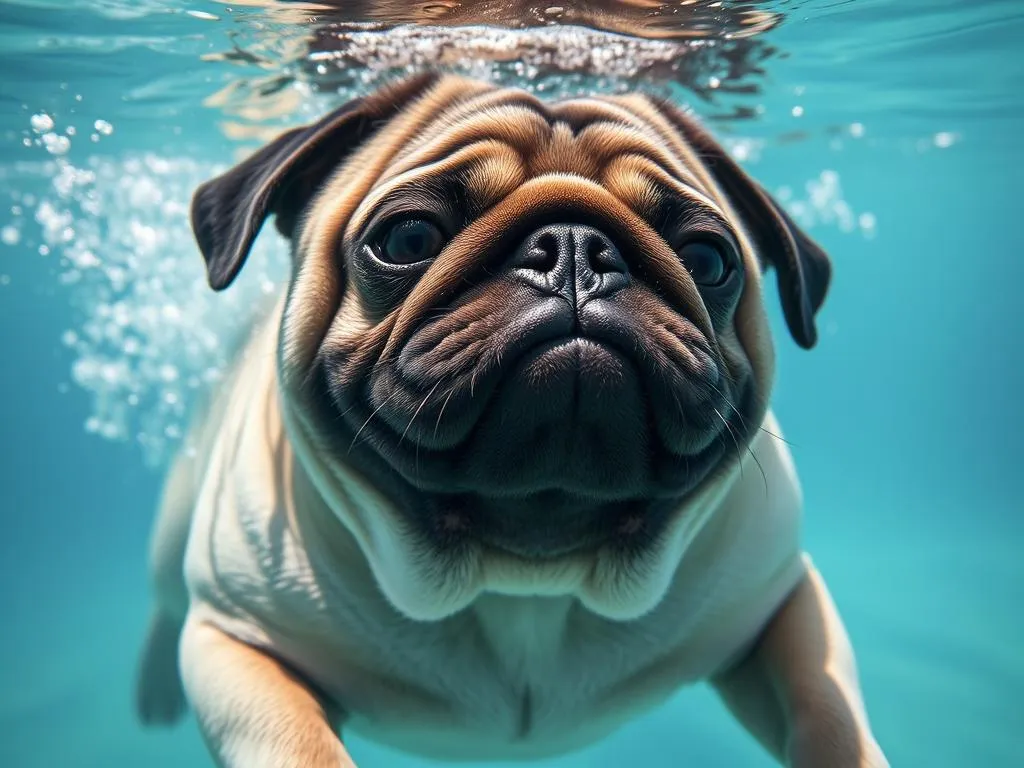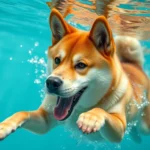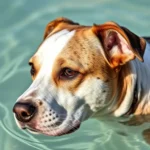
Introduction
Dog health care is crucial for ensuring the well-being and longevity of our furry friends. For pug owners, understanding their specific needs is vital, especially when considering activities like swimming. Can a pug swim? This question often arises among pug enthusiasts, and the answer involves a combination of factors, including a pug’s physical characteristics and health considerations.
In this article, we will delve into the swimming abilities of pugs, the benefits of swimming, safety measures to take, and alternatives to swimming. By the end of this post, pug owners will be better equipped to make informed decisions about their pets’ activities in the water.
Understanding Pugs and Their Unique Health Needs
Overview of Pug Characteristics
Pugs are known for their charming looks and playful personalities. With a compact body, curly tail, and distinctive wrinkled face, they are undeniably adorable. However, their physical traits come with unique health challenges. Pugs are classified as a brachycephalic breed, meaning they have short noses that can lead to breathing difficulties, especially during strenuous activities like swimming.
Common health issues associated with pugs include:
- Brachycephalic airway syndrome: This condition can cause respiratory problems, making it essential to monitor their activity levels, especially in warm weather.
- Obesity: Pugs are prone to weight gain, which can exacerbate their breathing issues and lead to other health problems.
- Joint disorders: Conditions like hip dysplasia can impact their mobility, making low-impact activities crucial for their health.
General Health Considerations for Pugs
Regular vet check-ups are vital for pugs to catch any health issues early on. Vaccinations and preventive care, such as flea and tick control, are essential. Owners should also pay attention to their pug’s diet and exercise routine to maintain a healthy weight and overall well-being.
Can Pugs Swim? An In-Depth Look
Swimming Ability of Pugs
When it comes to swimming, pugs are not the most natural swimmers. Their body structure, characterized by a broad chest and short legs, can hinder their swimming ability. Unlike breeds such as Labrador Retrievers or Golden Retrievers, which are built for swimming, pugs may find themselves struggling in the water.
Can a pug swim? While they can swim, they may not do so efficiently. Pugs often tire quickly due to their brachycephalic nature, which makes it challenging for them to get enough air while swimming. Additionally, their weight distribution can lead to difficulty in keeping their heads above water.
Factors Affecting a Pug’s Swimming Ability
Several factors can influence whether a pug can swim effectively:
- Age and physical condition: Older pugs or those with existing health issues may find swimming more challenging. It’s essential to assess their fitness level before introducing them to water.
- Weight and body composition: Overweight pugs may struggle more in the water, as their extra weight can make swimming harder and more tiring.
- Previous exposure to water: Pugs that have had positive experiences with water in the past may be more inclined to swim, while those who are unfamiliar with it may be hesitant.
Benefits of Swimming for Pugs
Physical Health Benefits
Swimming can be a fantastic low-impact exercise for pugs. As a weight-bearing exercise, it helps maintain a healthy weight without putting too much strain on their joints. Some specific physical health benefits include:
- Low-impact exercise for maintaining a healthy weight: Swimming allows pugs to burn calories and stay active while minimizing the risk of injury.
- Improvement of joint health and muscle tone: The buoyancy of water reduces the impact on joints, making it an excellent option for pugs with joint issues.
Mental Health Benefits
In addition to physical benefits, swimming can also promote mental well-being for pugs. Here are a few ways swimming can positively impact their mental health:
- Stress relief and anxiety reduction: The soothing nature of water can help calm anxious pugs, making swimming a great outlet for their energy.
- Socialization with other dogs and humans: Swimming often takes place in group settings, providing opportunities for pugs to socialize and interact with other dogs and people.
Safety Considerations for Pugs Swimming
Preparing Your Pug for Swimming
Before taking your pug for a swim, it’s essential to prepare them properly:
- Gradual introduction to water: Start by introducing your pug to shallow water. Let them explore at their own pace and never force them into the water.
- Use of life jackets and floating devices: Consider investing in a dog life jacket, especially for pugs. These jackets provide extra buoyancy and can help keep your pug safe while swimming.
Supervising Your Pug While Swimming
Constant supervision is crucial when your pug is in the water. Here are some important points to keep in mind:
- Importance of constant supervision: Never leave your pug unattended while swimming. Even strong swimmers can get into trouble, and pugs may tire quickly.
- Signs of distress to watch for: Be on the lookout for signs of distress, such as excessive splashing, difficulty keeping their head above water, or unusual vocalizations.
Post-Swimming Care
After a swimming session, it’s important to care for your pug:
- Rinsing off chlorine or saltwater: Always rinse your pug with fresh water after swimming to remove any harmful chemicals from their coat.
- Drying ears to prevent infections: Pugs are prone to ear infections, so make sure to dry their ears thoroughly after swimming to prevent moisture buildup.
Alternatives to Swimming for Pugs
Other Low-Impact Exercises
If swimming isn’t a viable option for your pug, there are plenty of other low-impact exercises to consider:
- Walking and hiking: Regular walks and gentle hikes can provide excellent exercise for pugs without the risks associated with swimming.
- Canine fitness classes: Many communities offer fitness classes designed specifically for dogs, focusing on low-impact exercises that improve strength and flexibility.
Enrichment Activities at Home
Keeping your pug mentally stimulated is just as important as physical exercise. Here are some enrichment activities you can try at home:
- Puzzle toys and mental stimulation games: Provide toys that challenge your pug’s problem-solving skills. These toys can keep them engaged and prevent boredom.
- Indoor play options for rainy days: Engaging in interactive play indoors, such as fetch or hide and seek, can help burn off energy when outside activities are limited.
FAQs About Pugs and Swimming
Common Concerns and Misconceptions
Many pug owners have questions about their dogs’ swimming abilities. Here are some common concerns:
- “Are all pugs bad swimmers?”: While pugs may not be natural swimmers like some breeds, each dog is different. Some pugs can enjoy swimming with proper training and supervision.
- “Can swimming lead to respiratory issues for pugs?”: Swimming can pose risks for pugs, especially if they become overly exhausted. Always monitor their breathing and take breaks as needed.
Expert Opinions
Experts agree that while pugs can swim, it requires supervision and care. According to veterinarians and dog trainers, the key is to introduce swimming gradually and ensure the pug is physically fit enough to participate in this activity.
Conclusion
In summary, while pugs may not be the best swimmers, they can enjoy swimming with the right precautions. The physical and mental health benefits of swimming can enhance your pug’s quality of life, but safety should always be the top priority. By understanding their unique needs and taking the necessary precautions, pug owners can ensure a safe and enjoyable swimming experience for their beloved pets.
As you consider incorporating swimming into your pug’s routine, remember to share your experiences and tips with other pug owners. Engaging with the community can provide valuable insights and support for keeping our furry friends healthy and happy.









